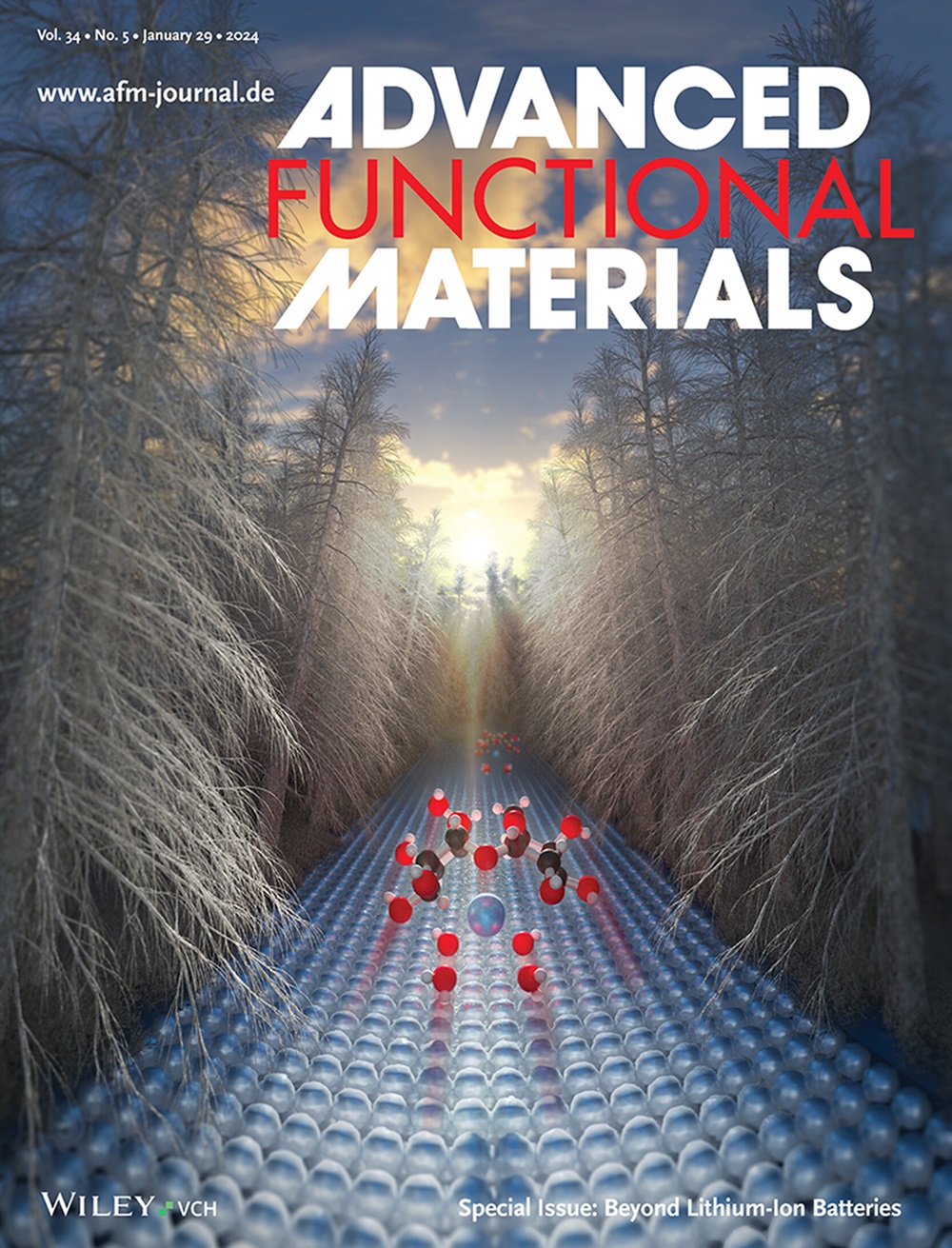通过调整碳化钼原子比的相结感应增强碘的逐步转化
IF 18.5
1区 材料科学
Q1 CHEMISTRY, MULTIDISCIPLINARY
引用次数: 0
摘要
由于穿梭效应,碘氧化还原转换经常会出现多碘化物形成和失活的问题。为了应对这些挑战,我们采用闪焦耳加热法,调控碳化钼(MoxC)纳米团簇的原子比,使其均匀地分散在掺氮碳中,从而诱导出不同的相结。这种策略不仅能在多孔碳中物理捕获碘,还能通过形成 MoxC 相结加强化学吸附,从而促进碘的高效转化。由此产生的内置电场加速了电荷迁移,促进了多碘化物还原为碘离子,并增强了整体电催化能力。光谱分析显示,中间物种极少,这表明碘氧化还原动力学速度快,能垒低,这一点已得到理论计算的证实。因此,锌碘电池的使用寿命超过 50 000 次,容量保持率高达 95.2%。这种相结工程确保了加速电荷迁移和电催化的协同效应,为设计先进的锌碘电池催化剂及其他催化剂提供了宝贵的见解。本文章由计算机程序翻译,如有差异,请以英文原文为准。

Phase Junction Induction Through Atomic Ratio Tuning of Molybdenum Carbides for Enhanced Stepwise Iodine Conversion
Iodine redox conversion often suffers from polyiodide formation and deactivation due to the shuttle effect. To address these challenges, the atomic ratio of molybdenum carbide (MoxC) nanoclusters are modulated, uniformly dispersed within nitrogen-doped carbon, to induce distinct phase-junctions through a flash Joule heating method. This strategy not only physically traps iodine within porous carbon but also strengthens chemisorption by forming MoxC phase junctions, facilitating efficient iodine conversion. The resulting built-in electric field accelerates charge migration, promoting the reduction of polyiodides to iodide ions and enhancing overall electrocatalysis. Spectroscopic analysis reveals minimal intermediate species, indicative of rapid iodine redox kinetics with low energy barriers confirmed by theoretical calculations. Consequently, zinc-iodine batteries exhibit a remarkable lifespan of over 50 000 cycles with a capacity retention of 95.2%. This phase-junction engineering ensures the synergistic effect that accelerates charge migration and electrocatalysis, offering valuable insights to design advanced catalysts for zinc-iodine batteries and beyond.
求助全文
通过发布文献求助,成功后即可免费获取论文全文。
去求助
来源期刊

Advanced Functional Materials
工程技术-材料科学:综合
CiteScore
29.50
自引率
4.20%
发文量
2086
审稿时长
2.1 months
期刊介绍:
Firmly established as a top-tier materials science journal, Advanced Functional Materials reports breakthrough research in all aspects of materials science, including nanotechnology, chemistry, physics, and biology every week.
Advanced Functional Materials is known for its rapid and fair peer review, quality content, and high impact, making it the first choice of the international materials science community.
 求助内容:
求助内容: 应助结果提醒方式:
应助结果提醒方式:


